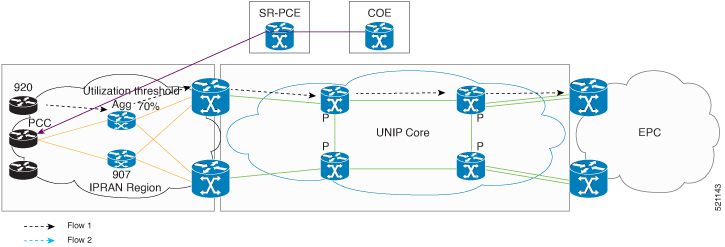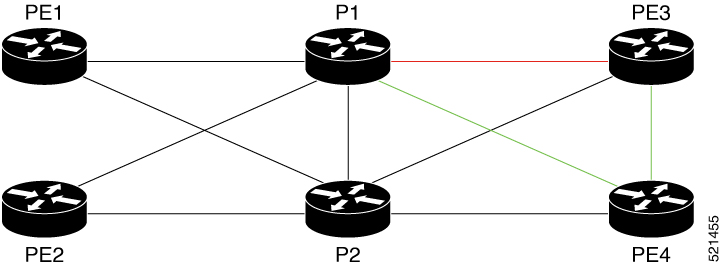COE-PCE Initiated SR Policy

The preceding topology shows how an SR-PCE policy is initiated from COE:
-
SR policy is configured on the COE with profile ID.
-
COE pushes the SR policy to PCE and PCE forwards the SR policy to PCC.
-
Profile ID on PCC is matched with the profile ID on COE-PCE.
-
IGP autoroute announce is configured on the PCC.
-
The policy gets provisioned.
-
The data traffic now adheres to the SR policy that is pushed from the COE.
-
Complete SR Policy manipulation occurs only on COE.
Restrictions for PCE Initiated SR Policy
-
A maximum of 500 SR policies are supported.
-
Only native COE is supported.
-
Effective Cisco IOS XE Bengaluru 17.5.1, Bandwidth optimization based on SR tactical policy is supported on RSP3.
-
Bandwidth optimization by using COE is not supported.
-
PIC core is not supported over SR-TE tunnel.
-
PIC edge over SR-TE is not supported.
-
Effective Cisco IOS XE Bengaluru 17.5.1, ECMP over SR-TE is supported on RSP3.
-
6PE and 6VPE are not supported with three and four transport labels.
-
IPv6 is not supported.
-
A maximum of 10,000 VPNv4 prefix limits are supported.
-
BGP LU (RFC 3107) is not supported for intra-AS and inter-AS.


 Feedback
Feedback